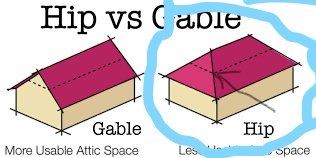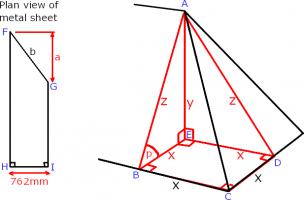rooferpaul
New member
- Joined
- Jun 7, 2022
- Messages
- 10
Hey guys I'm not particularly good at math and I have a question that nobody at work can help me with at work.
I'm a roofer and we have to make cuts of the metal sheets so that they line up with the angles of the rafters and parts of the house.
The angle of the corners of the houses or hips as we call them are always 45 degrees. However as the pitch of the roof changes the angle of our cut on the sheet changes. The sheet width is always .762mm. So for instance, if we were cutting up a hip on a 25 degree pitched roof, our cut length {or rake as we call it) across the sheet is 1020 I think by memory(though I may be wrong), but just for the sake of an example hopefully this should suffice.
What I need to work out is a formula so that once I know the pitch of the roof I can work out the 'rake' and make a stick to that length that would work for the whole job and make things a bit easier. I apologise for the terrible attachments but they hopefully help explain this better.
Thanks in advance, any help would be greatly appreciated.
I'm a roofer and we have to make cuts of the metal sheets so that they line up with the angles of the rafters and parts of the house.
The angle of the corners of the houses or hips as we call them are always 45 degrees. However as the pitch of the roof changes the angle of our cut on the sheet changes. The sheet width is always .762mm. So for instance, if we were cutting up a hip on a 25 degree pitched roof, our cut length {or rake as we call it) across the sheet is 1020 I think by memory(though I may be wrong), but just for the sake of an example hopefully this should suffice.
What I need to work out is a formula so that once I know the pitch of the roof I can work out the 'rake' and make a stick to that length that would work for the whole job and make things a bit easier. I apologise for the terrible attachments but they hopefully help explain this better.
Thanks in advance, any help would be greatly appreciated.



